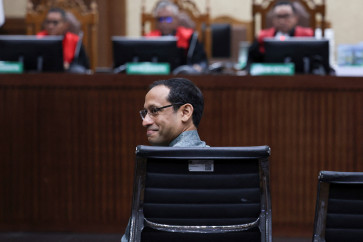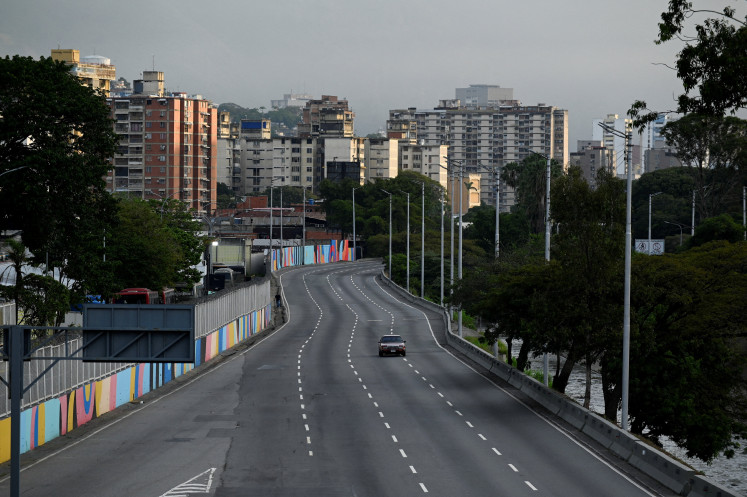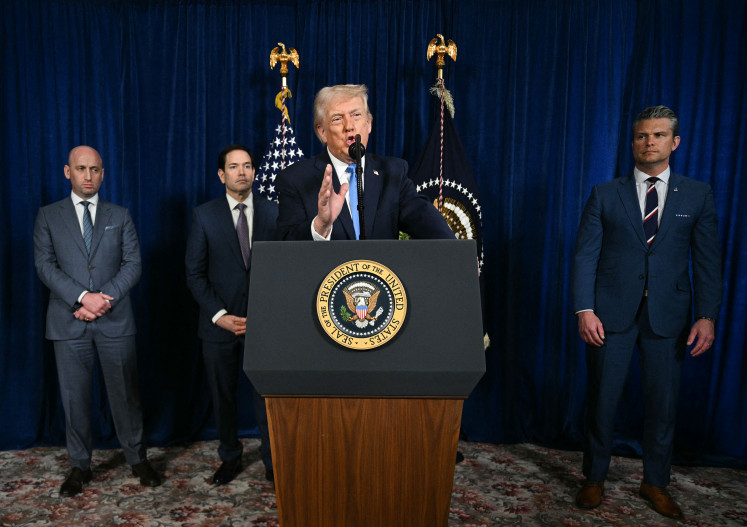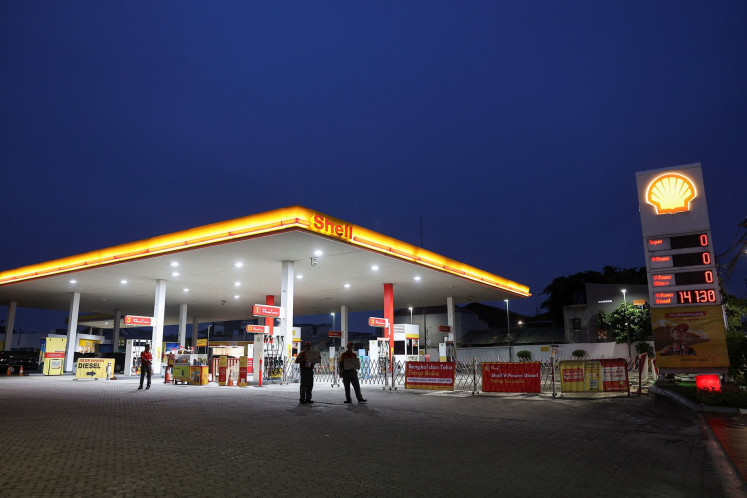Popular Reads
Top Results
Can't find what you're looking for?
View all search resultsPopular Reads
Top Results
Can't find what you're looking for?
View all search resultsFinancing Sunda Strait Bridge
The Sunda Strait Bridge, which will connect the islands of Sumatra and Java, is planned to start construction in 2014
Change text size
Gift Premium Articles
to Anyone
T
he Sunda Strait Bridge, which will connect the islands of Sumatra and Java, is planned to start construction in 2014.
Along its 31-kilometer length, the bridge will consist of a three-lane motorway in two directions, double track railway connection, a footpath and an emergency lane for vehicles, also a pipeline (oil, gas and water supply), and cabling works (fiber optic, telephone and electricity).
The cost is estimated at US$10 billion to $15 billion, or Rp 87 trillion to Rp 114.5 trillion. The President planned to issue a presidential regulation on the acceleration of development of the Sunda Strait Bridge in April 2011, but as of today it has still not materialized.
As we know, the biggest obstacle in any infrastructure development project is its high cost. The government regulation stipulates that all construction work contracts, consultants, suppliers and others shall be subject to 10 percent value-added tax (VAT) and 1.5 percent income tax. If all contract work can be exempted from VAT and income tax, the project costs can be reduced by 11.5 percent.
The next cost component is for construction materials, such as cement, steel, domestic equipment, and so on.
For any sale of cement and steel, the domestic industries are required to charge 10 percent VAT. If production by domestic cement factories and steel plants intended for use by the Sunda Strait Bridge project can be granted exemption from VAT, the spending can be further reduced.
Another cost component in construction are the materials and equipment that have to be imported, including work tools, which are always subject to import tax (15-30 percent), VAT (10 percent) and income tax (1.5 percent). If there is a possibility to make these items and materials exempt from these several taxes, then expenditure can be decreased even further.
Construction materials for the Sunda Strait Bridge include sand or soil for reclamation, gravel and other stone materials, all of which are generally under the authority of regional governments.
The contractor will need permits to quarry the materials from the relevant regencies and an incentive to reduce the levy charged for these materials to nil. If all tax barriers can be cleared, the total construction cost can be reduced by 15–20 percent.
Project funding commonly consists of an investor’s own capital (equity) amounting to approximately 30 percent, with the remaining 70 percent provided by bank loans. If this formula is applied to the Sunda Strait Bridge project, assuming the project is valued at $15 billion, equity of about $4.5 billion and bank loans amounting to $11.5 billion are needed.
The bank loans include credit insurance of about 2 to 3 percent and interest during construction (IDC) of between 10 to 15 percent. Providing equity of $4.5 billion is difficult, while securing loans from the domestic banking system to the tune of $11.5 billion will also be hard to do.
The way out is often to find a contractor who can bring their own financing with a “turn-key project” arrangement. Such contractors are commonly found abroad (China, South Korea and others), who get import credit facilities and financing guarantees from their respective countries. They will usually use all equipment, materials and subcontractors from their own countries of origin.
If the project is begun in 2014 and its construction completed within three years, and a break-even reached in about 15 years, the banks will have a very long wait before the repayment of their money; possibly up to 20 years.
For individual investors who want to get a return on their money in the short term, or for older investors, having to possibly wait up to 20 years before receiving a dividend means not only perhaps too long a wait but also high risks. There needs to be an alternative way to provide for exit plans among individual investors and banks.
One of the proposed funding models is to attract as many investors as possible right at the beginning of the development stage in the hope that the entire development costs will be borne by the investors.
The way to attract such investors is through the sale of the project’s shares in an initial public offering (IPO) listing, even though the project’s construction has only just started and is not yet operational.
This pattern has been commonly used for mining companies listed on the stock markets in Canada and Australia, although their mines have not become operational and they are still in various stages of exploration.
The Malaysian government, during the era of Mahathir Mohammad, facilitated the public listing of several national toll road projects on the Malaysian stock exchange, which resulted in their successful construction.
Another alternative for the Sunda Strait Bridge project is by way of a backdoor listing through a similar company or a company that is already listed on the stock exchange. Once listed, long-term investors like pension funds, insurance funds and investment funds can participate from the beginning, while initial investors (pioneer investors) can of course immediately get a profit at the early stages of the project as a goodwill gesture for pioneering the project.
If this strategy can be implemented, the construction costs of the Sunda Strait Bridge project could be reduced again by 10 to 15 percent, because it would not need to pay IDC or bank interest during the construction period and there would be no additional payments for bank credit insurance.
Sources of revenue from the Sunda Strait Bridge will be from the toll road charges and train fares, as well as other income. Additional sources will come from the large number of related projects, including the installation of pipelines (oil, gas and water), cabling works (fiber optic, telephone and electricity), and local area development (property projects, industrial estates, and tourist resorts).
Another project that could also be developed is wind power generation, which harnesses the force of the wind in the Sunda Strait as well as utilizing reclaimed land or islands (Snake Island, Sangiang Island and Prajurit Island), where the foundations of the Sunda Strait Bridge will be located. Wind power could be used to supply electricity for the operations of the Sunda Strait Bridge and related property projects.
Such a pattern, if it works, can be passed on to build the Bali Strait Bridge, the Lombok Strait Bridge, the Dumai-Bengkalis Strait Bridge, and the Sumatra-Barelang Strait Bridge.
The writer is former co-chairman of the Infrastructure Working Group in IMT-GT BC (Indonesia Malaysia Thailand Growth Triangle - Business Council) 1998-2008. This article is first published in Bisnis Indonesia.










